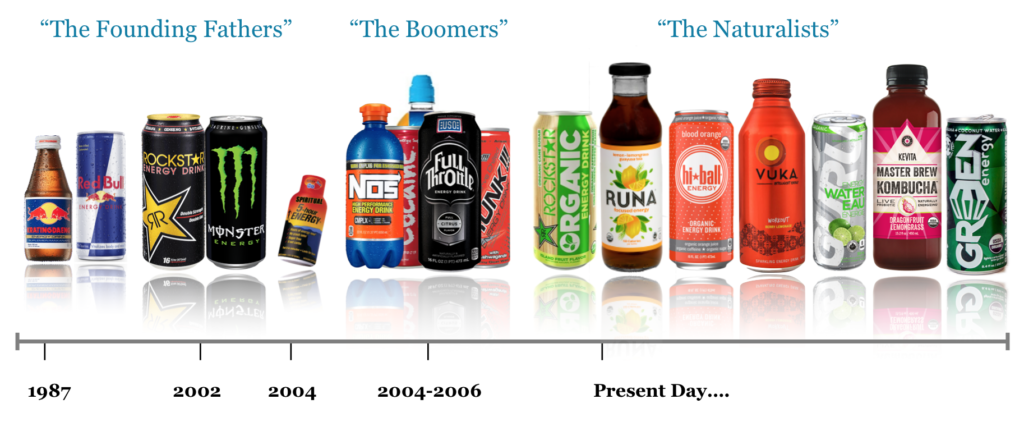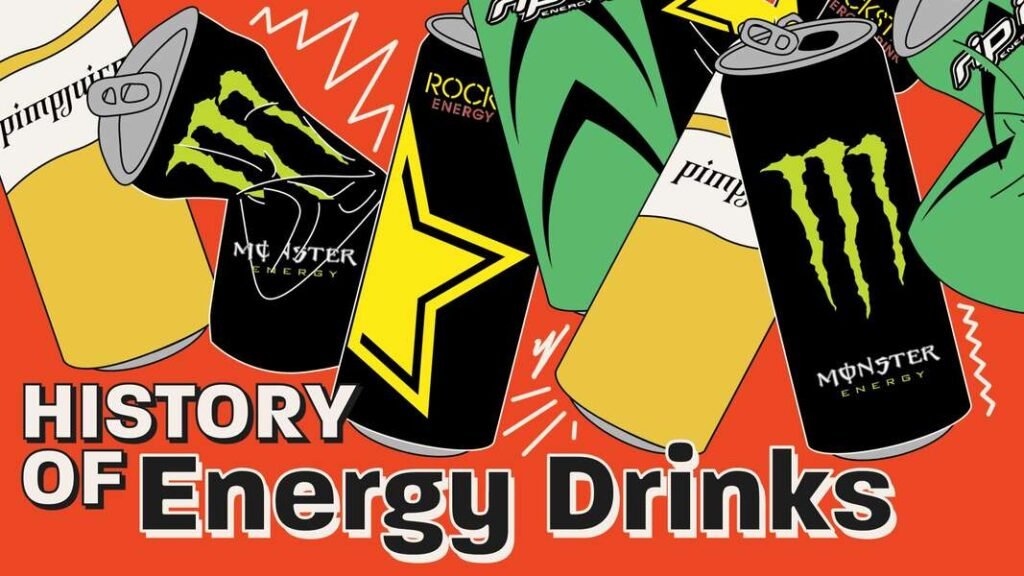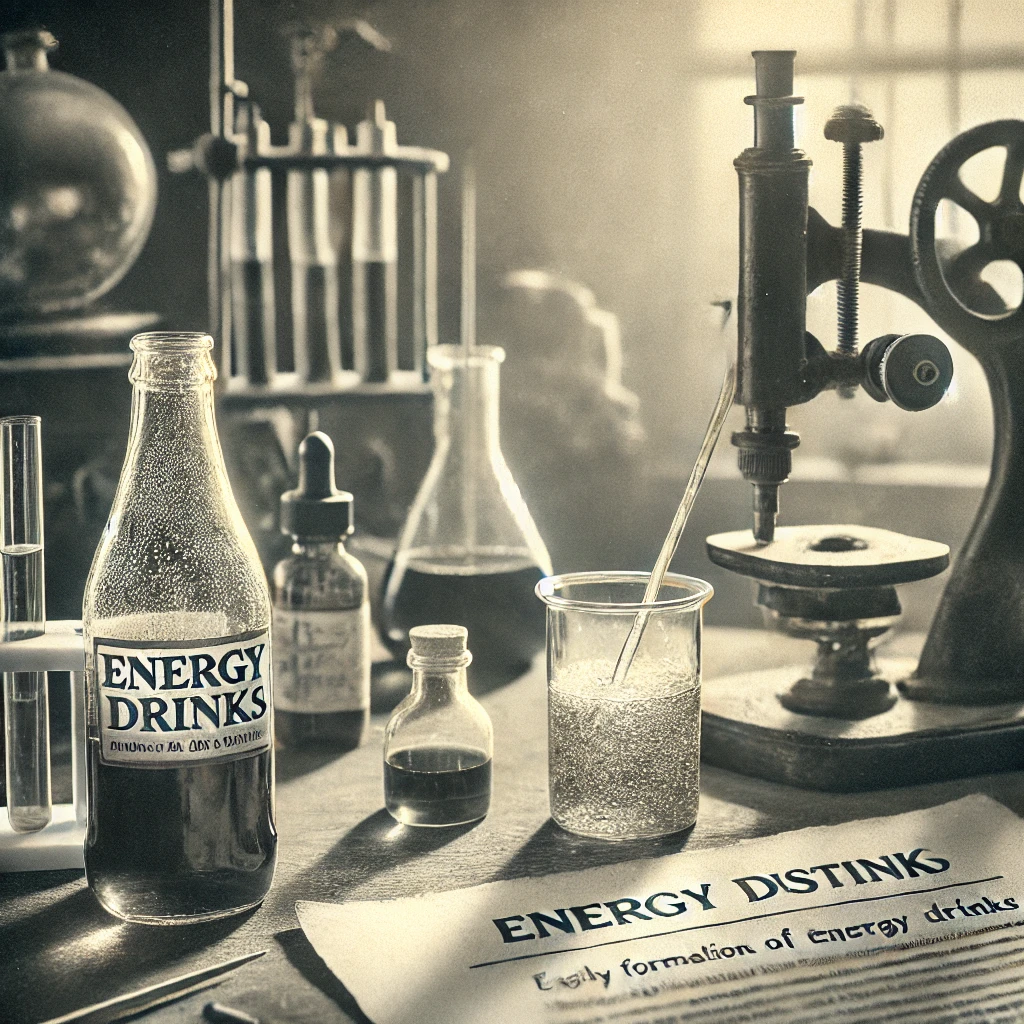Energy drinks were marketed as simple health supplements; nevertheless, they have transformed into a multi-billion dollar industry. Initially, energy drinks emerged in the 1960s, primarily in Japan, with products like Taurine. Over the decades, they evolved significantly; thus, capturing the attention of young adults and athletes alike.
The journey of energy drinks reflects significant changes in consumer preferences and market dynamics. In the 1980s, Red Bull launched, marking a pivotal moment in energy drink market history. This launch coincided with the rise of extreme sports in the 1990s; consequently, this fueled aggressive marketing strategies targeting adventurous consumers. Brands like Monster Energy followed; consequently, they further expanded the energy drink development landscape and appealed to diverse consumer demographics.
In contrast, health concerns related to energy drinks have surfaced; consequently, many consumers worry about high caffeine and sugar levels in these beverages. To illustrate, regulatory scrutiny has increased; hence, ongoing research into cognitive performance and physical endurance is essential. In response, the energy drink development has shifted towards healthier formulations, incorporating functional ingredients that appeal to health-conscious consumers; in fact, this change reflects a growing awareness of health and wellness among consumers.
Global attitudes towards energy drinks differ widely based on cultural contexts. Social media and influencer marketing play significant roles in shaping these perceptions. Research on the effects of energy drinks shows mixed results, indicating a need for further investigation. As consumer preferences evolve, the future may trend towards healthier formulations, reflecting a growing awareness of health and wellness in the energy drink market.
Uncover the Fascinating Energy Drink History That Changed How We Power Up
The evolution of energy drinks began in the 1960s with health supplements like Taurine in Japan, culminating in the creation of Red Bull in the 1980s. This transformation highlights a shift from simple health products to a dynamic market.
Energy drinks originated in the 1960s, marking the start of a new beverage category. During this time, products like Taurine emerged in Japan, marketed as health supplements. These early drinks aimed to boost energy and performance; moreover, they evolved significantly, capturing the attention of young adults and athletes alike.
In the 1980s, the landscape changed dramatically with the introduction of Red Bull. Created by Dietrich Mateschitz and Chaleo Yoovidhya, this drink drew inspiration from a Thai beverage called Krating Daeng. In this context, it became synonymous with energy drinks worldwide; moreover, brands like Red Bull and Monster Energy have played pivotal roles in this transformation.
Monster Energy history showcases how innovative flavors and aggressive marketing strategies captured the attention of young adults. Additionally, the rise of extreme sports during the 1990s fueled this trend; consequently, it led to a surge in energy drink consumption.
Over the years, health concerns related to energy drinks have surfaced; consequently, many consumers worry about high caffeine and sugar levels in these beverages. In response, the energy drink development has shifted towards healthier formulations, incorporating functional ingredients. To stand out in a crowded market, some energy drinks have begun to incorporate functional ingredients such as vitamins, amino acids, and herbal extracts into their formulations; thus, this change reflects a growing awareness of health and wellness among consumers.
Perceptions of energy drinks can differ greatly from one region to another. In this regard, energy drink brands often utilize social media to engage with their audience; indeed, they create dynamic campaigns that highlight the lifestyle associated with their products. This scrutiny reflects a broader trend towards health consciousness among consumers, who demand more information about what they consume. Research indicates mixed results regarding the effects of energy drinks, highlighting the need for further investigation. Overall, the energy drink industry continues to evolve; therefore, it ensures relevance in a competitive market.
Discover the Secret Power Behind Energy Drinks for Athletes
The marketing strategy of energy drinks focuses on appealing to young adults and athletes by promoting benefits like increased energy and endurance. Brands often emphasize the advantages of their products, such as enhanced mental alertness and improved performance. This approach resonates particularly well with consumers seeking a boost during physical activities.
The rise of extreme sports in the 1990s significantly contributed to the popularity of energy drinks. Companies began sponsoring events and athletes, effectively reaching their target demographic. This marketing strategy not only increased brand visibility but also established a strong connection with adventurous consumers.
Additionally, energy drink brands often utilize social media to engage with their audience; in fact, they create dynamic campaigns that highlight the lifestyle associated with their products. This strategy effectively attracts young adults who aspire to embody the energy and excitement promoted by these brands; indeed, their marketing tactics often emphasize performance benefits.
In truth, the energy drink industry has evolved dramatically since its inception. The history of energy drinks reveals a shift from simple health supplements to a multi-billion dollar market. As a result, in this way, these brands have become synonymous with energy drinks, influencing consumer perceptions and preferences.
The marketing strategies used by energy drink companies demonstrate a deep insight into consumer behavior. By targeting young adults and athletes, these brands successfully position themselves as essential companions for active lifestyles. Consequently, the energy drink development continues to adapt; therefore, it ensures relevance in a competitive market.

Energy Drink History Reveals Shocking Truths About Caffeine and Sugar
The high caffeine and sugar content of energy drinks raises significant health concerns and invites regulatory scrutiny. These beverages have become a staple for many; however, their impact on health cannot be overlooked. In light of this, the energy drink industry faces scrutiny regarding health impacts; thus, ongoing research into cognitive performance and physical endurance is essential.
Health concerns surrounding energy drinks often stem from their high levels of caffeine, sugar, and other stimulants. When consumed excessively, these ingredients can lead to serious issues such as heart palpitations and anxiety. Regulatory bodies in various countries have begun to scrutinize energy drink formulations; hence, ongoing research into cognitive performance and physical endurance is essential. This scrutiny reflects a broader trend towards health consciousness among consumers, who demand more information about what they consume.
The history of the energy drink market shows considerable evolution throughout the decades. Initially, energy drinks were marketed as simple health supplements; nevertheless, they have transformed into a multi-billion dollar industry. Brands like Red Bull and Monster Energy have played pivotal roles in this transformation, capturing the attention of young adults and athletes alike. Their marketing strategies often emphasize the benefits of increased energy and endurance; similarly, their marketing strategies often emphasize the benefits of increased energy and endurance, appealing to those seeking a performance boost.
Cultural attitudes towards energy drinks are notably diverse across various regions. Social media and influencer marketing have become powerful tools in shaping these views. Research indicates mixed results regarding the effects of energy drinks, highlighting the need for further investigation. On the other hand, others indicate potential negative effects on health. As the industry continues to evolve, it must navigate these challenges while meeting the demands of a more informed consumer base.
Discover the Surprising Secrets Behind Energy Drink Success
Have you ever considered how the global energy drink market has evolved into a multi-billion dollar industry? This remarkable growth stems from innovative product offerings and strategic marketing efforts; thus, companies have aggressively expanded their product lines to capture diverse consumer preferences.
The energy drink market has witnessed exponential growth, with revenues soaring into billions annually. This surge results from brands implementing aggressive marketing strategies that resonate with young adults and athletes. Additionally, the introduction of functional ingredients like vitamins and herbal extracts has allowed brands to stand out in a crowded marketplace; thus, this change reflects a growing awareness of health and wellness among consumers.
Brands like Red Bull and Monster Energy have played pivotal roles in shaping the energy drink industry history. Their marketing tactics often emphasize performance benefits; thus, companies have aggressively expanded their product lines to capture diverse consumer preferences. As a result, in this way, these brands have become synonymous with energy drinks, influencing consumer perceptions and preferences.
The evolution of energy drinks reflects changing consumer demands; moreover, it highlights how energy drinks are embraced in some regions while facing restrictions in others due to health concerns. At the outset, these beverages now incorporate various functional ingredients. This shift aligns with a growing trend towards health consciousness; therefore, brands must navigate health concerns while maintaining their appeal.
Cultural perceptions of energy drinks vary significantly across different regions. Social media and influencer marketing have become essential tools for shaping these views. Research indicates mixed results regarding the effects of energy drinks, highlighting the need for further investigation into their health implications.
The energy drink market’s history illustrates a dynamic landscape shaped by innovation and consumer awareness. As brands continue to evolve, they must navigate health concerns while meeting the demands of a more informed consumer base.

Discover the Energy Drink History That Transformed Global Markets and Preferences
Cultural perceptions and marketing strategies greatly affect the popularity and acceptance of energy drinks in various countries. This phenomenon highlights how energy drinks are embraced in some regions while facing restrictions in others due to health concerns; furthermore, cultural attitudes towards energy drinks are notably diverse across various regions. Understanding these dynamics is crucial for grasping the energy drink market’s evolution.
The cultural perception of energy drinks varies globally. In some countries, these beverages are integrated into modern lifestyles, often seen as essential for socializing and enhancing performance. Conversely, other nations impose strict regulations due to rising health concerns associated with high caffeine and sugar content. This dichotomy illustrates the complex relationship between consumer habits and regulatory frameworks.
Social media and influencer marketing have transformed how energy drinks are perceived, especially among younger consumers. Brands leverage platforms like Instagram and TikTok to create engaging content that resonates with their target audience. This strategy effectively cultivates a lifestyle image around energy drinks, making them appealing to a demographic that values energy and excitement.
The significance of marketing strategies is crucial in understanding the energy drink market. Companies like Red Bull and Monster Energy have successfully positioned themselves as leaders in the energy drink industry. Their campaigns often emphasize performance benefits; thus, brands are adapting their formulations accordingly. This approach has solidified their status in the energy drink market history.
In addition, the evolution of energy drinks reflects changing consumer demands. At the outset, these beverages now incorporate various functional ingredients. This shift aligns with a growing trend towards health consciousness; therefore, brands must navigate health concerns while maintaining their appeal. As a result, the energy drink development continues to evolve; therefore, it ensures relevance in a competitive market.
Are Energy Drinks the Secret to Boosting Your Performance
Research is ongoing regarding the effects of energy drinks on cognitive performance and physical endurance, with trends showing a shift towards healthier formulations.
Research studies have delved into how energy drinks affect cognitive performance and physical endurance. These studies reveal mixed results regarding their efficacy. Some findings suggest that energy drinks can enhance alertness and stamina; thus, incorporating functional ingredients. On the other hand, others indicate potential negative effects on health. The energy drink industry history shows a growing interest in understanding these impacts; hence, ongoing research into cognitive performance and physical endurance is essential. Consequently, brands are under pressure to provide transparent information about their products.
As consumer preferences evolve, the future of energy drinks may include a shift towards healthier formulations. This change could involve reducing sugar content and incorporating natural ingredients. The energy drink market history reflects a trend where brands like Red Bull and Monster Energy adapt to these demands. By focusing on health-conscious options, companies can attract a broader audience; indeed, this scrutiny reflects a broader trend towards health consciousness among consumers.
While energy drinks began as simple health supplements, their landscape has evolved significantly. Initially, these beverages aimed to boost energy and performance; however, the energy drink development now emphasizes functional ingredients that cater to modern consumer needs. As the industry continues to grow, brands must navigate health concerns while maintaining their appeal. Given these points, the energy drink market will likely see further innovations in product offerings.
The energy drink industry is at a critical juncture as it responds to evolving consumer preferences. As brands evolve, they must balance performance benefits with health considerations. This dynamic landscape will shape the future of energy drinks, ensuring they remain relevant in a competitive market.

As We Conclude the Energy Drink History What Have We Learned About Its Impact
The energy drink industry has transformed dramatically since its inception, captivating consumers worldwide with its vibrant offerings. This evolution reflects changing consumer preferences and health considerations, shaping the energy drink market history. The journey of energy drinks, from their origins to their current status, reveals much about our society’s relationship with energy and performance.
Initially, energy drinks emerged in the 1960s, with products like Taurine in Japan paving the way for future innovations. The launch of Red Bull in the 1980s marked a significant milestone in energy drink history; consequently, this fueled aggressive marketing strategies targeting adventurous consumers. As a result, brands like Monster Energy followed; consequently, they further expanded the energy drink development landscape and appealing to diverse consumer demographics.
Today, the energy drink market continues to grow, driven by strategic marketing and innovative product offerings. Consumers increasingly seek healthier formulations; therefore, brands must navigate health concerns while maintaining their appeal. In light of this, the energy drink industry faces scrutiny regarding health impacts; thus, ongoing research into cognitive performance and physical endurance is essential. All in all, the evolution of energy drinks reflects broader cultural trends and consumer demands, ensuring their place in modern society.
Listen to an AI-Generated Podcast of this Blog
Unveiling the Surprising Origins of Energy Drinks
Did you know that energy drinks have a fascinating history? The origin of energy drinks dates back to the 1960s in Japan. Initially, products like Taurine emerged as health supplements. For this reason, they aimed to boost energy and performance. The launch of Red Bull in the 1980s marked a pivotal moment in energy drink history. This drink drew inspiration from a Thai beverage called Krating Daeng. Moreover, Monster Energy followed suit, expanding the energy drink market significantly. The evolution of energy drinks reflects changing consumer preferences and health considerations. Even though health concerns have surfaced, the industry continues to thrive. On balance, brands now focus on healthier formulations to meet consumer demands. Given these points, the energy drink industry remains a dynamic and evolving market.
FAQs
What can you tell me about the origin of energy drinks?
Energy drinks originated in the 1960s with products like Taurine in Japan, marking the start of a new beverage category.
How did Red Bull change the energy drink market history?
The launch of Red Bull in the 1980s marked a significant milestone, fueling aggressive marketing strategies targeting adventurous consumers.
Can you explain the evolution of energy drinks over the years?
The evolution of energy drinks reflects changing consumer preferences, shifting from simple health supplements to a dynamic multi-billion dollar market.
What role does Monster Energy play in energy drink development?
Monster Energy history showcases innovative flavors and aggressive marketing strategies that captured the attention of young adults and athletes.
How do health concerns affect the energy drink industry history?
Health concerns regarding high caffeine and sugar levels have led to increased regulatory scrutiny and a shift towards healthier formulations.
What are some functional ingredients found in modern energy drinks?
Modern energy drinks incorporate vitamins, amino acids, and herbal extracts, reflecting a growing awareness of health and wellness among consumers.
How do cultural perceptions influence the energy drink market?
Cultural attitudes towards energy drinks vary globally, affecting their acceptance and popularity in different regions due to health concerns.
What impact does social media have on energy drink marketing?
Social media and influencer marketing shape perceptions, creating engaging content that resonates with younger consumers and promotes lifestyle images.
What ongoing research is being conducted regarding energy drinks?
Ongoing research investigates the effects of energy drinks on cognitive performance and physical endurance, revealing mixed results about their efficacy.
How does the energy drink industry respond to consumer demands?
The energy drink industry adapts by focusing on health-conscious options, ensuring relevance in a competitive market while addressing health concerns.
Come Visit Us
We have three fantastic locations we’d love to invite you to! If you’re in the Chicagoland area, you can come chill with us at either our Grayslake or Schaumburg locations. Alternatively, if you’re in Wisconsin, stop by and visit us at our Kenosha lounge. Please note that you must be 21+ to enter with a valid ID. We hope to see you soon!


